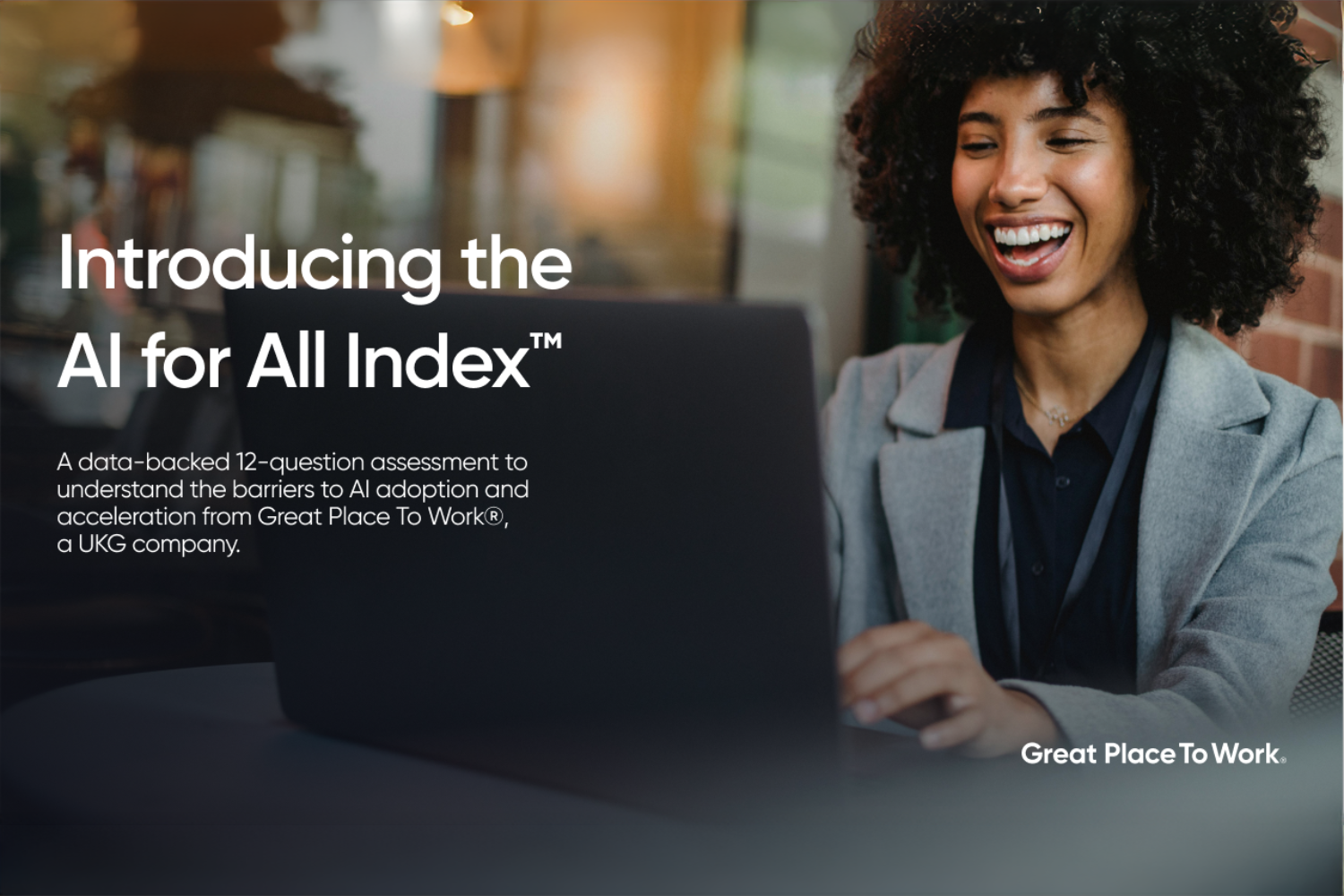AI (Artificial Intelligence), DEIB, Diversity & Inclusion, Employee Well-being
From the beginning of the employee journey, AI technology promises to create a level playing field for every employee.
Can artificial intelligence help create more equitable workplaces?
The transformation promised by this technology has the potential to break down barriers, if companies approach the project with the right intentions. It also has the potential to reinforce and exacerbate structures that create inequality.
“What will machines learn from us?” asked Michael C. Bush, CEO of Great Place To Work® at the For All Summit™ in May. “We really need to start thinking about the next 500 years, especially to solve the complex problems that face us today, and the ones that are coming.”
Bush and other optimists about the potential for AI to fight bias and create opportunity point to how great workplaces are using AI to reimagine the workforce.
“I believe machines can optimize outcomes for all,” he says. “When you think about 500 years, you realize that everyone does better when everyone does better.”
AI is already being used to mitigate bias and improve the hiring process among the 2024 Fortune 100 Best Companies to Work For®. Here’s how these companies are using AI to level the playing field:
1. Reviewing job descriptions and improving hiring processes
Many great companies use AI to ensure job descriptions and job posts are written to attract a range of experiences and backgrounds. Companies like Atlassian use AI across the hiring process, from creating job descriptions to candidate screening.
Hilton uses Datapeople, a recruiting tool with built-in AI tech used to remove potential bias from the job description drafting and posting process, providing clear and inclusive language to attract candidates from every background. More than nine in 10 users (93%) at Hilton said the tool simplified the process for writing and publishing job descriptions. The majority of users also said the tool created a template that better represents Hilton’s culture, ensuring candidates’ first impression of Hilton is one where they can imagine themselves in the role.
Box uses its own AI tools to create a job description from raw notes taken during an intake meeting and analyze that job description for biased language. It then uses its AI tools to summarize interview notes and scorecards after the team interviews a new candidate, helping simplify the process for decision-makers. Box AI can also be used to generate interview questions or rubrics based on job requirements to help interviewers get complete information about a candidate.
2. Addressing bias in the workplace
AI tools can be used to address bias beyond the recruiting and hiring process.
Cadence offers employees AI tools that can analyze any written communication for bias and suggest edits to ensure messaging adheres to the company’s inclusive language guidelines.
AI can also be a useful tool when analyzing data from employee engagement surveys. Protiviti uses an AI tool it developed in-house to analyze open-ended responses to its annual survey and asks the technology to provide 10 top themes from the feedback employees provide. Protiviti also looks for key trends and themes segmented by career stage to understand how it can better support employees throughout their journey in the organization.
AI tools also offer the potential to address gaps for employees with disabilities. At Workiva, workers in its employee resource group for employees with disabilities share tips with one another for using AI tools to support writing, organization, information processing, and accessibility.
3. Creating more opportunities for employees
AI tools can also be used to analyze roles in the organization.
Jackson Healthcare uses AI and machine learning to review performance management models to ensure every associate at the company is positioned for success and can meaningfully contribute. For example, the organization uses AI to identify skills needed for specific job functions, and then delivers personalized learning content to help associates master the skills needed to advance in their careers.
Elevance Health also uses AI in its “Career Hub” to synthesize data from its human capital management system to suggest personalized career and development opportunities for employees. Examples of suggestions the system makes include courses and learning content, identifying mentors, suggesting a potential career path, or identifying open jobs within the organization.
In this way, AI can become an essential tool for improving equity of opportunity, one of the four equities that drives equity and representation across a company.
4. Improving well-being
AI technology is also being used by great workplaces to address another of the four equities: equity of well-being. Great workplaces are always asking: Do all employees in the company consistently experience inclusion, belonging, social support, and a sense of purpose?
Hilton partners with Alight to help team members navigate the complex U.S. health care system for themselves and their families. Alight uses AI to make personalized health care recommendations through a one-on-one concierge at no cost to team members. Among the many uses, the system can offer information about benefits and coverage, help locate a health care provider, and compare costs of procedures and medications.
An important piece of the puzzle for employee well-being is having meaningful work, an area where many companies struggle to offer a consistent experience across their workforce.
Slalom, a consulting company based in Seattle, Washington, uses AI to support its “Meaningful Work” program, which aims to align roles with team members’ passions. An AI-powered tool helps team members discover their passions and strengths. By guiding them to define what truly drives them, this tool connects participants with like-minded colleagues and opportunities that resonate with their sense of purpose, ensuring that the whole of their work experience fuels their passion.











